Special Report
2018's Amazing Accomplishments in Climate Science

Published:
Last Updated:

Wildfires have ripped through Southern California, Greece, and Brazil. A hurricane ravaged North and South Carolina. Massive flooding inundated southern India. Venice waters rose, flooding shops amid heavy downpours in Italy. Temperatures in the North Pacific Ocean this fall were among the warmest on record. A drought withered much of Europe this summer.
As in recent years past, 2018 has also seen a lot of unusual weather, and it is likely to get much worse. Considering the grim predictions, climate science has become more important than ever — we cannot fix problems we either deny or do not understand.
There have been several important developments in our understanding of climate this year; in our quest to understand the relationship between human activity and its effect on the environment; and in our efforts to combat the causes of global warming and protect the public from its worst impacts.
The following are 25 important developments in climate science in 2018. They include advances in clean energy, vast improvements in weather prediction and climate-related data collection, and an ambitious effort to clean the oceans of millions of tons of garbage. Thanks in large part to human activity, the global climate is radically changing, but some are rising to the many challenges facing us in the years to come.
Click here to see 2018’s amazing accomplishments in climate science.

1. Cost-effective uranium seawater extraction.
Scientists have known for a while that seawater contains trace amount of uranium, the key ingredient in the production of nuclear power. A 2016 report from the United States Nuclear Energy Agency and the International Atomic Energy Agency estimates the world’s seawater harbors 4 billion metric tons of uranium, but the radioactive metal is so diluted in the seas and oceans that the economics of the extraction process has been prohibitively costly.
However, researchers at the U.S. Department of Energy’s Pacific Northwest National Laboratory (PNNL) have come one step closer to hitting the watery uranium motherlode when they extracted 5 grams of yellowcake (the powdered form of uranium used in nuclear power production) through an inexpensive process involving electricity and acrylic fibers.
If this process is used on a large scale, it could become a reliable source of uranium. Nuclear power is controversial, but it is widely considered to be part of the mix of future sustainable energy sources needed to wean the world off fossil fuels. Nuclear power is the source of 13% of global — and 20% of U.S. — electricity production.
[in-text-ad]

2. A CO2-powered power plant.
One of the key strategies in combating global warming is carbon capture, a way to harvest waste carbon dioxide before it is emitted into the atmosphere. The question remains, however, what to do with the captured carbon? There are two ways to deal with this excess greenhouse gas. One is to sequester it, typically by injecting it into geological formations – essentially returning the CO2 back to the underground.
Another way to deal with waste CO2 is to utilize it as a source of fuel at power plants. Carbon dioxide is known to extinguish fire, so it seems counterintuitive to think of it as a fuel and source of heat. But above a certain temperature and pressure, it becomes supercritical CO2 (sCO2) — a fluid state of carbon dioxide — and can be compressed and used to spin a turbine with much greater efficiently than steam.
This means excess carbon dioxide can be captured and used to produce power without any net increase in greenhouse emissions. Earlier this year, in LaPorte, Texas, the first experimental no-emissions power plant using sCO2 to produce electricity went online. The $140 million, 50-megawatt grid-connected plant, build by Durham, North Carolina-based NET Power, is being tested this year, and investors hope to begin building commercial plants by 2021.

3. Plastic consuming enzyme discovered
Plastic waste has a disturbing effect on wildlife, especially on animals of the seas and oceans, where roughly 8 million tons of plastic ends up every year.
These plastics take centuries to break down, and as the pieces get smaller they can be absorbed into the bodies of marine life, and eventually back onto our dinner plates. The health effects of consuming these microscopic plastic bits are still being studied.
One way to combat the threat plastic waste poses to the environment is to utilize organisms that break down plastics. We have known for years that certain fungi, insects and microorganisms eat plastic, but researchers in Japan this year created an enzyme in the lab that could be bioengineered to break down plastics into their original components.
This process could create an advanced recycling system in which existing waste plastic could be broken down and reformed into new plastic. The enzyme was discovered by accident, when in 2016 a researcher at a garbage dump in Japan discovered a bacterium that naturally evolved to eat plastic.

4. Extracting CO2 from the atmosphere to produce fuel
Climate science is largely focused on the big problem: how to reduce the amount of carbon dioxide released into the atmosphere — increasing CO2 levels is the main driver of global warming. As such, research into advancing the process of capturing and sequestering CO2 is ongoing. This year, a group of Harvard University scientists and Canadian company Carbon Engineering said they have developed a cost-effective method of extracting CO2 from the air.
Their research suggests that some day we will be able to produce fuel from existing CO2 in the atmosphere, a process that would result in no net increase in carbon emissions. The chemically complicated technique relies on existing science that sucks in surrounding air and captures CO2, which can then be turned into fuel by combining it with hydrogen. As long as the hydrogen is derived from renewable energy sources, the process would be a carbon-neutral way to produce liquid fuel. Most important: it is a cheap process. The report says it can remove a metric ton of CO2 for between $94 and $232, down from a current estimate of $600 using existing carbon capture technology.
[in-text-ad-2]
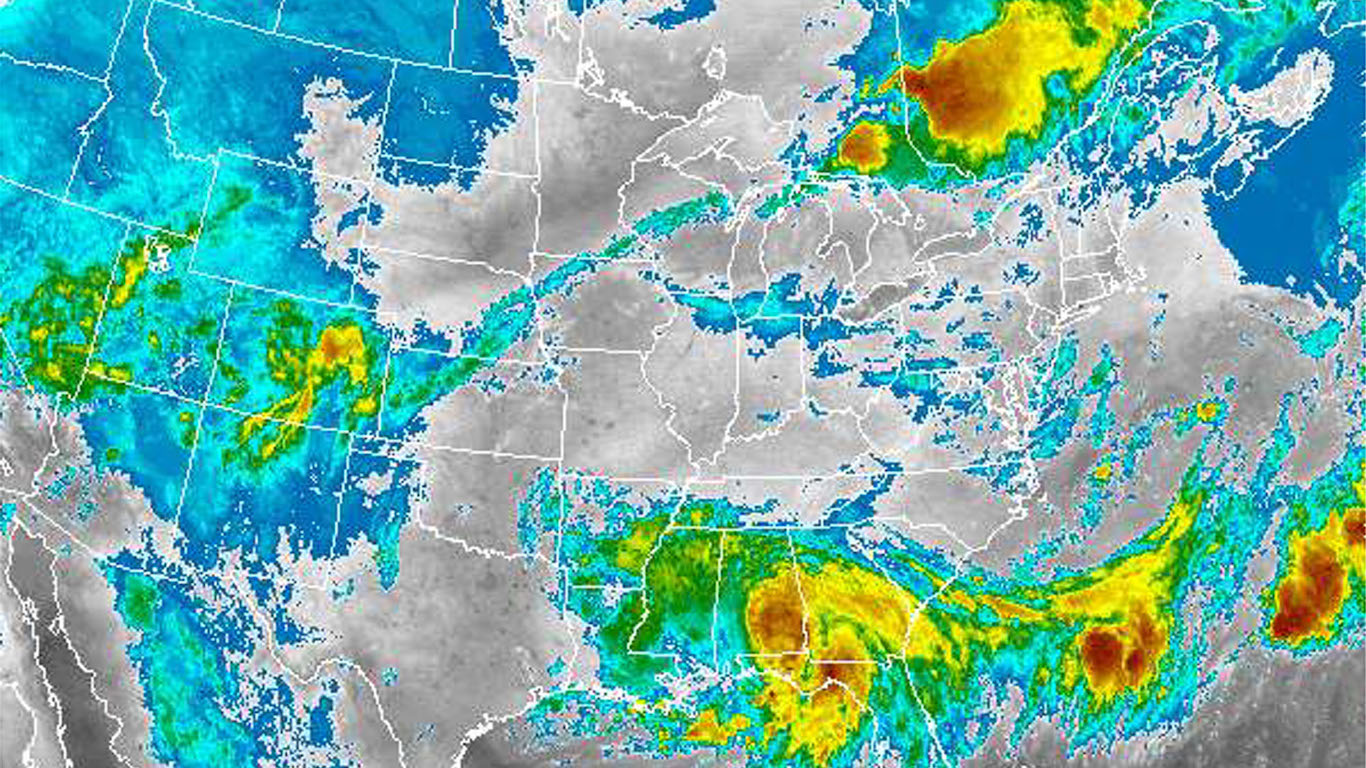
5. Improved atmospheric modeling
The U.S. National Oceanic and Atmospheric Administration (NOAA) is crucial to public safety during threatening weather events, namely hurricanes and tornadoes, when minutes can be the difference between life and death. NOAA scientists and researchers are constantly trying to utilize new computing and satellite technologies to get as close to real-time forecasting as possible.
The NOAA has two primary short-range weather modeling systems: the High-Resolution Rapid Refresh (HRRR) and the Rapid Refresh (RAP). The RAP system covers weather from a bird’s eye view (or, rather, a satellite’s eye view) of the earth from the Arctic circle to the equator; much of the Pacific and Atlantic Oceans and the entire Caribbean Basin.
The HRRR system is more localized, focusing on the 50 states and the Caribbean. It is updated more frequently than the RAP, and it can zoom in on weather activity to as little as 3 kilometers (1.9 miles), which provides it with precision modeling needed during violent weather events. Both the HRRR and the RAP were upgraded this past summer to offer more frequent real-time updates and offering more precise measurements of weather and atmospheric conditions, improving the NOAA ability to accurately predict weather events.

6. India uses supercomputers to improve weather forecasting
The United States may be a leader in advanced weather modeling, but India is also making headway in more accurate weather forecasting. In February, the India Meteorological Department (IMD) launched new forecasting techniques using U.S.-made supercomputers. The upgrade allows Indian forecasters to predict weather conditions in 12-kilometer grids (7.5 miles) across the country for up to 10 days. The new supercomputers can perform trillions of computations per second from data compiled automatically from land, sea, and satellite weather observations.
The IMD says the new system will be able to forewarn the public about heat and cold waves, monsoon activity, dense fog, and thunderstorms. The system takes about three hours to compile its daily 10-day forecast, which is available to the public every day at 11:30 a.m.
[in-text-ad]
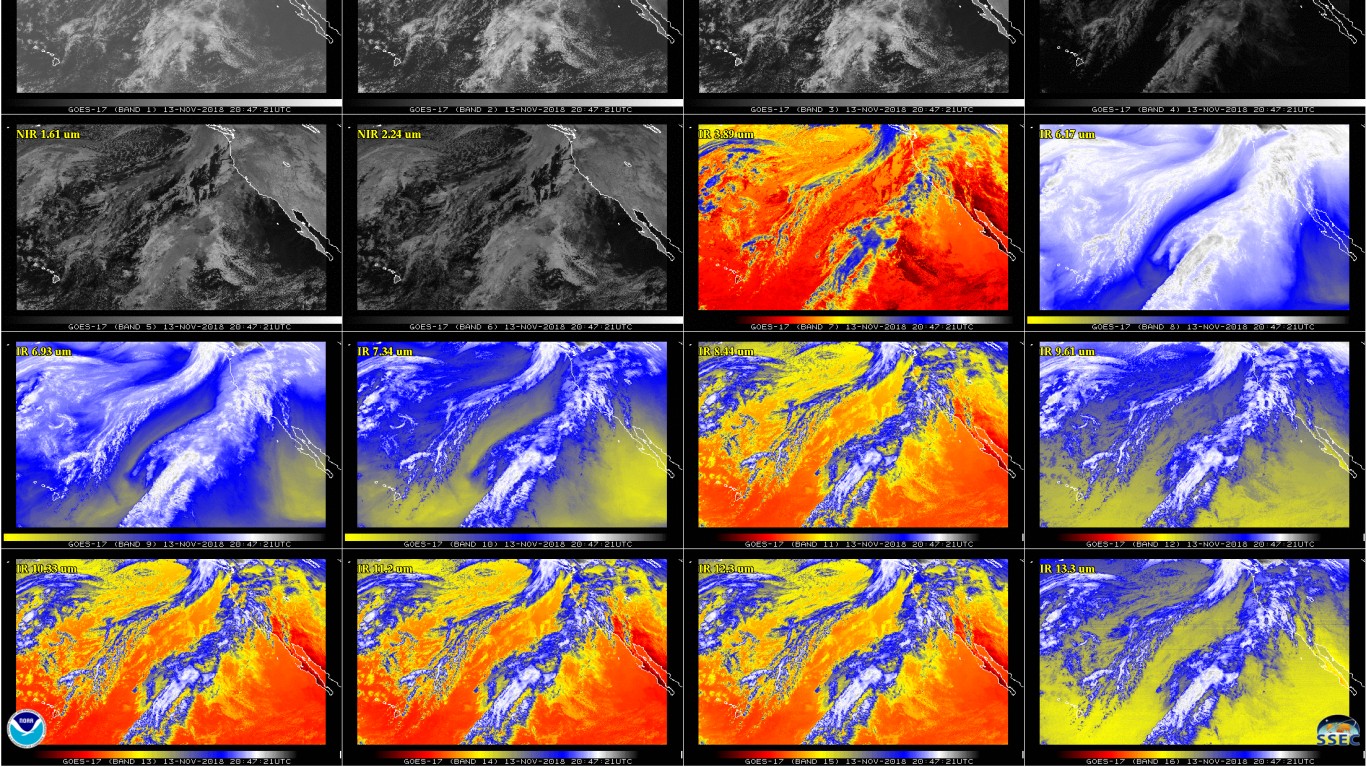
7. NOAA launches next-gen weather satellite for western US
U.S. climate monitoring hit a milestone in November, when the GOES-17 satellite (launched in March) sent back its first batch of stunning high-resolution color images of Hawaii, Alaska, the Woosley wildfire in Southern California, and Earth above the Pacific Ocean from 22,000 out in space.
The geostationary satellite will become the eyes in the sky for the West Coast of the United States and is the first of its kind to cover the nation’s two non-contiguous states and much of the Pacific Ocean. GOES-17 is the second of four Lockheed Martin-built modern GOESs (Geostationary Operational Environmental Satellites) that will provide climatologists access to the latest imagery technology through 2036.
The satellites are capable of capturing infrared imagery in 16 different channels, allowing researchers to track and monitor cloud formation, atmospheric motion, land surface temperatures, fire and smoke events, convection currents, volcanic ash emissions, sea and other features. GOES-17 will be renamed GOES West once it arrives at its final destination in its assigned geostationary orbital path, which means it will remain over the same area while following the natural rotation of the Earth. GOES East was launched last November and covers much the eastern part of the United States. Many of the images of North and South Carolina in the aftermath of Hurricane Florence were provided by GOES East.

8. NASA identifies causes of Earth’s “wobble”
We have known for a while that the Earth is an imperfect sphere that wobbles as it rotates. The phenomenon, called “polar motion,” leads our planet’s axis to drift about 4 inches per year, or more than 11 yards (33 feet) over the course of a century. For years, scientists have attributed this imperfect rotation to the ebb and flow of glaciers. As glaciers grow and shrink through the passing of the seasons, the land below them compresses and expands from the changing mass of the ice sheets above it, altering the rotation of the Earth.
However, NASA scientist discovered this year the glacier flow is responsible for only about a third of the movement in Earth’s axis. They found that another third is the result of the movement of tectonic plates, pushed around by heat from Earth’s core. And perhaps more significantly: the melting of ice sheets is responsible for another third of Earth’s imperfect spin through the solar system. Specifically, when ice that covers land becomes ocean water it alters Earth’s mass profile.
Greenland plays an outsized role in this: as more of its ice melts into the Ocean, polar motions changes. Polar motion might not have a measurable impact on climate, at least in the short term, but it shows that human-caused global warming can have an impact on the Earth’s axis.

9. Global warming even worse than we thought
As if we need any more grim news about global warming: Scientists from the U.S., China, Germany, and France announced findings this year showing that global warming has advanced more than previously thought, and that the world’s oceans have absorbed more heat than anyone had estimated up to now.
Extrapolating data from 4,000 so-called Argo floats scattered throughout the world’s oceans and seas, the researchers estimated that more than 90% of the heat caused by the burning of carbon for fuel is being absorbed by the oceans, a far higher number than previously thought. Though some errors in calculations have been found, researchers say the main conclusion of the study that the world’s oceans and seas are warming faster than previously estimated remains unchanged.
The warming oceans are not only contributing to global warming and unusual weather patterns, but also increasing reef-killing acidity and literally dissolving the ocean floor, wreaking immense damage to underwater ecosystems. The findings add urgency to an already grim outlook about Earth’s climate in the coming decades.
[in-text-ad-2]

10. Nobel in economics for work on climate change and tech innovation
As the threat of global warming increases so too does the need to study the economic impact of global warming. In October, U.S. economists William Nordhaus and Paul Romer won the 2018 Nobel Prize in Economic Sciences for their work “integrating climate change into long-run macroeconomic analysis.”
Specifically, the two focused, separately, on how to factor nature’s effect on technological innovation. Romer has focused on how ideas require specific market conditions to be turned into innovation; his theory has influenced public policy as it pertains to encouraging innovations.
Nordhaus’ findings have focused on the interactions between society and nature, and his model has been widely used to examine the consequences of climate-related public policies, such as the economic impact of carbon taxation. The work of Romer and Nordhaus has provided tools for examining the impact of regulations on developing methods to fight global warming.

11. 3.2 million electric cars are in use worldwide
Electric cars have been around since the dawn of the automobile — the first one invented in the 1830s. By the 1980s-1990s, battery technology had advanced enough to capture the attention of big automakers like General Motors and Toyota. In the ’80s and ’90s, battery technology had advanced enough to capture the attention of big automakers like General Motors and Toyota. More recently, Nissan’s LEAF (introduced in 2010) became the world’s best-selling electric car, with nearly 300,000 units sold globally by 2017.
American automaker Tesla Inc. also captured the world’s attention with its sleek, tech-heavy luxury electric cars. Today, every major automaker is getting into the electric vehicle business. Earlier this year, a survey by Germany’s Centre for Solar Energy and Hydrogen Research Baden-Württemberg (ZSW) found that the world has a record 3.2 million electric cars, including 1.2 million in smog-choked China.
[in-text-ad]

12. Nuclear fusion could be used for electricity within 15 years
Nuclear fusion, a theoretical source of zero-carbon energy, perpetually seems to be an more innovation of the future rather than the present. The fusion process involves forging lighter elements to form heavier elements, a process that leads to a release of energy. This is done by squeezing hydrogen atoms until they fuse to form helium.
The problem is the process requires such extreme temperatures scientists need to overcome two issues: how to avoid the hot material from melting any solid machines, and how to reach a reaction that would produce more energy than was used to create the heat. Scientists hope magnets could help solve both problems and plan to build the first fusion reactor connected to a power grid by the early 2030s.
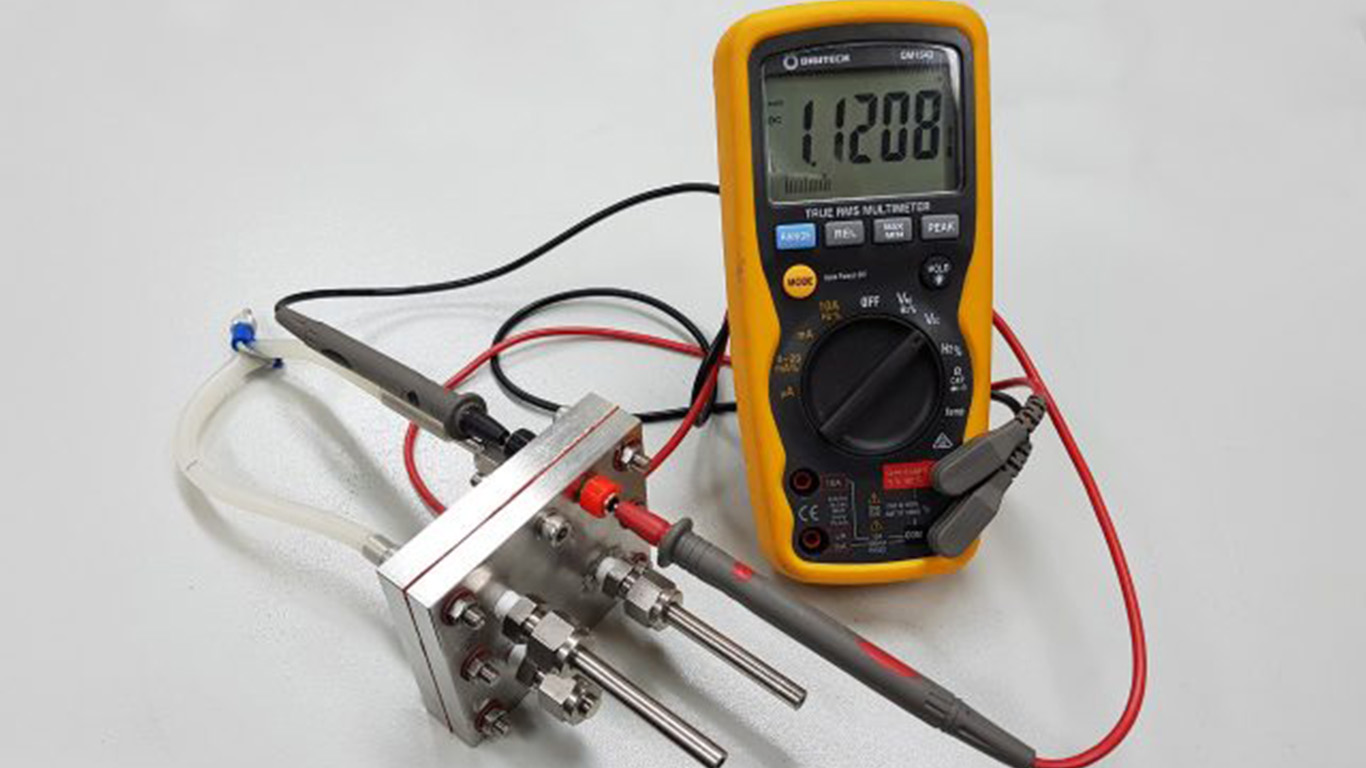
13. Creation of a rechargeable proton battery prototype
Earlier this year, researchers at Australia’s RMIT University announced a breakthrough in environmentally friendly energy storage technology that has the potential to change the way we power our homes, gadgets, vehicles, and even entire electric grids. Called a “proton battery,” the technology is complicated but essentially involves storing hydrogen in a carbon electrode connected to a so-called reversible fuel cell that produces electricity.
Crucially, the battery does not require lithium ion, the material used in current energy storage devices, from electric car battery packs to smartphone batteries. Instead, it relies on an electrode made from cheap and abundant solid carbon. The researchers were able to prove their concept with a small proton battery that was able to store as much energy as a comparably sized lithium ion battery.
The next step is usually the biggest challenge in such research: the ability to scale up the technology from inside a research lab to a commercially viable enterprise. Time will tell if the proton battery can replace lithium-ion ones.

14. Breakthrough in diesel systems technology.
Despite all the interest in and promises of electric vehicle technology, the number of battery-powered passenger cars remains a sliver of the total number of cars. According to the International Energy Agency, electric cars (including plug-in gas-electric hybrids) command only about 1% to 2% (or less) of local market share, except in Norway, Iceland, and Sweden.
This means that for the foreseeable future, reducing pollution from internal combustion engines is still an important part of combating greenhouse gas emissions. Research continues to lower emissions from diesel engines. This year, German company Bosch claimed a breakthrough in making diesel engines cleaner through the use of new fuel-injection technology and air and temperature management.
The company says the new technology greatly reduces nitrogen oxide emissions, reducing this greenhouse gas to 13 milligrams per kilometer, way below the EU mandate of 120 mpk by 2020. Cleaner internal combustion engine tech is vital until the world adopts vehicle electrification or some other technology en mass, which is still a long way off.
[in-text-ad-2]

15. Advances in spintronic research to lead to new computing technology
Computers can produce a lot of heat, and energy-sucking data centers both produce and consume a lot of energy to keep the servers from overheating. A new research, however, might change all that by creating new computing devices – spintronic devices — that generate little heat and do not use much electricity.
Spintronics research has had another breakthrough this year, when engineers at the University of California, Riverside, were able to use spintronic components made of low-cost metals and silicon, rather than expensive ones. Unlike electronic devices, like the personal computer, spintronics devices utilize the intrinsic angular motion of an electron, or spin, to process, transmit and store data. Spintronic computers would be far more powerful and require no energy to maintain data in memory. Spintronics research is still very much in its early development stage.
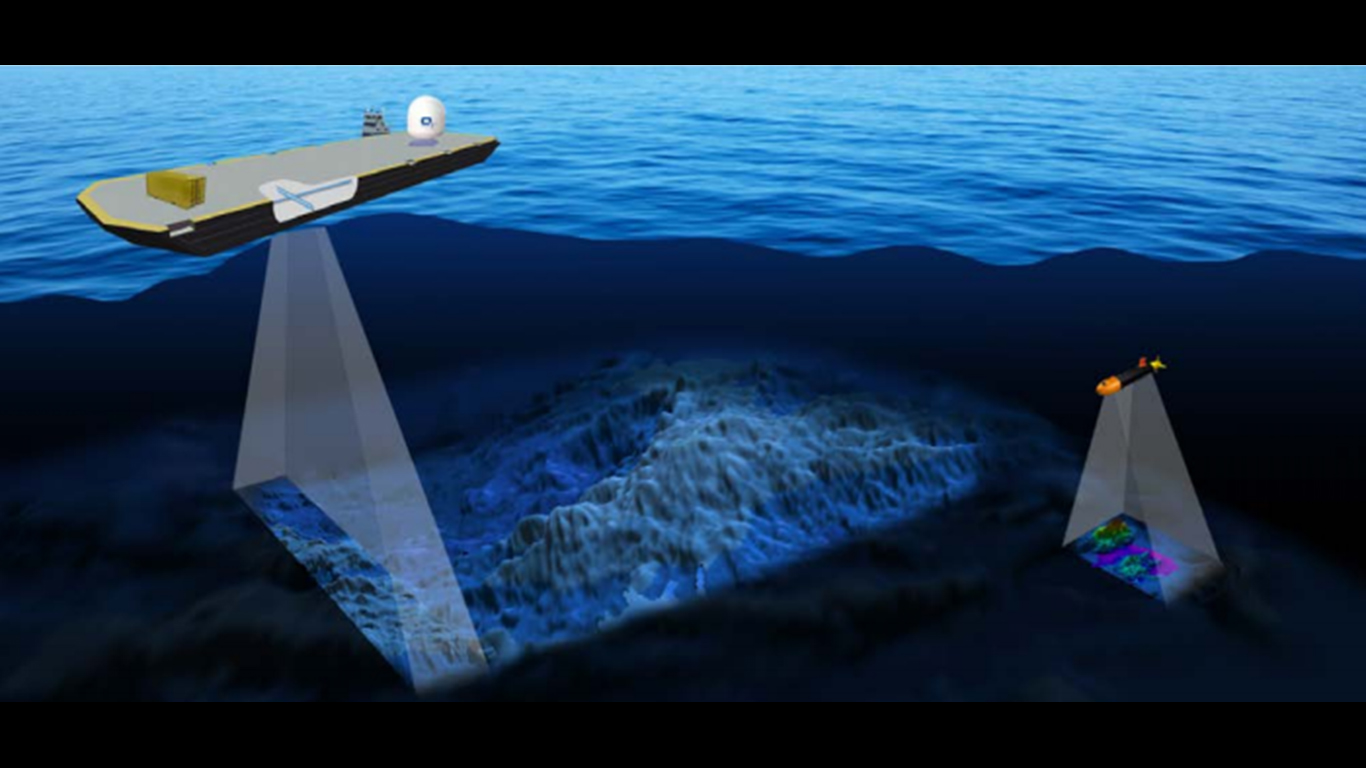
Considering how far we have progressed in exploring the world around us, from remote Antarctica to the moon, it is almost inconceivable to think that more than 80% of the world’s oceans and seas is unexplored. With new deep-sea drone technology, new discoveries of deep-sea life seem to happen regularly.
Earlier this year, researchers announced a new project to completely map the world’s ocean floors by 2030. Appropriately called Seabed 2030, the project aims to amass data from underwater drones, fishing boats, merchant ships, and even shipwreck explorers to draw a complete picture of the undersea world. Currently about 93% of the world’s underwater depths beyond 200 meters (650 feet) is uncharted, meaning that we know more about the surfaces of the moon and Mars than we do about what lies beneath the waves. The research is of particular importance these days as we learn more about the oceans’ influence on climate.
[in-text-ad]
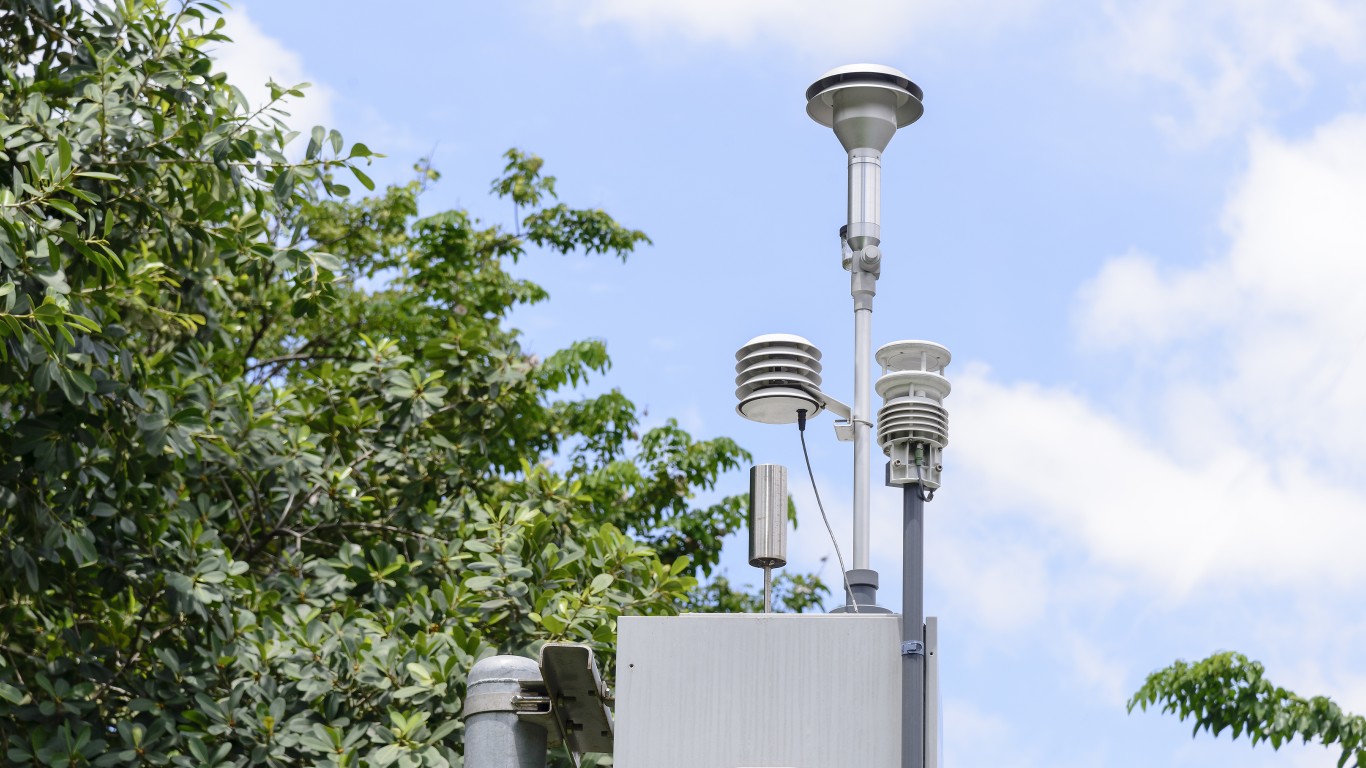
17. Low-cost air quality stations
Florence, Italy, is known more for its Renaissance art and architectural heritage than technological innovation. However, a group of researchers at the local Institute of Biometeorology announced in August the result of testing a low-cost, accurate air quality monitoring device that promises to increase the number of air quality measurement points that can complement official pollution-monitoring stations, therefore providing a more detailed picture of pollution levels in urban environments.
The researchers developed an inexpensive circuit board and tested its ability to measure particulate matter – the microscopic bits of lung-irritating smog emitted from internal combustion engines and industrial activity. They found that the inexpensive sensor was as accurate as more costly equipment. Additional testings of the device continues to verify its accuracy in measuring other pollutants like carbon dioxide and nitrogen oxide.
The lunchbox-sized monitor, known as the AIRQuino, is designed to last at least a year without maintenance and allows the circuit board to be swapped out about every two years. The innovation comes as prices for electronic sensors are plunging. Today, a new generation of inexpensive pollution monitors cost as little as $250, though the accuracy of their measurements vary considerably.

18. Smartphones could be used to anticipate weather patterns
Though the use of data from smartphones has raised privacy concerns, one way smartphone sensor data could be used, according to researchers at Tel Aviv University, is to anticipate weather patterns that can lead to devastating and fatal flash floods. Some 3 billion to 4 billion smartphones worldwide, they said, are equipped with sensors that are constantly monitoring the surrounding environment, including atmospheric pressure, humidity, and temperature.
Combined, the computing power of these smartphones, if the data were shared, would offer a “staggering” amount of information compared to the 10,000 or so weather stations, according to Prof. Colin Price, who led the research. Price envisions a system not unlike another Israeli product – Waze, the GPS navigation and traffic monitoring app – in which smartphone users share the environmental data collected by smartphone sensors to monitor and predict flash floods, which are becoming more pernicious as global temperature rise.

19. Solar panels can now generate electricity from raindrops
Energy harvested directly from sunlight is becoming more and more common. One estimate by SolarPower Europe says demand for electricity produced by solar power worldwide reached 100 gigawatts last year, a 30% rise from the previous year. In 2009, total global solar power installations amounted to less than 10 gigawatts of output, according to the International Energy Agency. (One gigawatt is estimated to be able to power about 750,000 homes for year, according to the U.S. Department of Energy.)
The global growth in solar power installations is being led by China, whose policymakers are hoping to reduce urban air pollution through the aggressive promotion of electric cars and alternative energy sources. As the leader in photovoltaic energy, it should be no surprise that Chinese researchers are trying to find ways to improve solar panels. Engineers at Soochow University in Suzhou demonstrated earlier this year a solar panel that can also harvest power from the static created by raindrops that roll down the surface of the panel.
By using so-called triboelectric nanogenerators, energy harvesting devices that convert mechanical energy into electricity, the engineers were able to simplify the process by using one of the solar panels polymer layers as the electrodes for both the nanogenerators and the solar cell.
[in-text-ad-2]
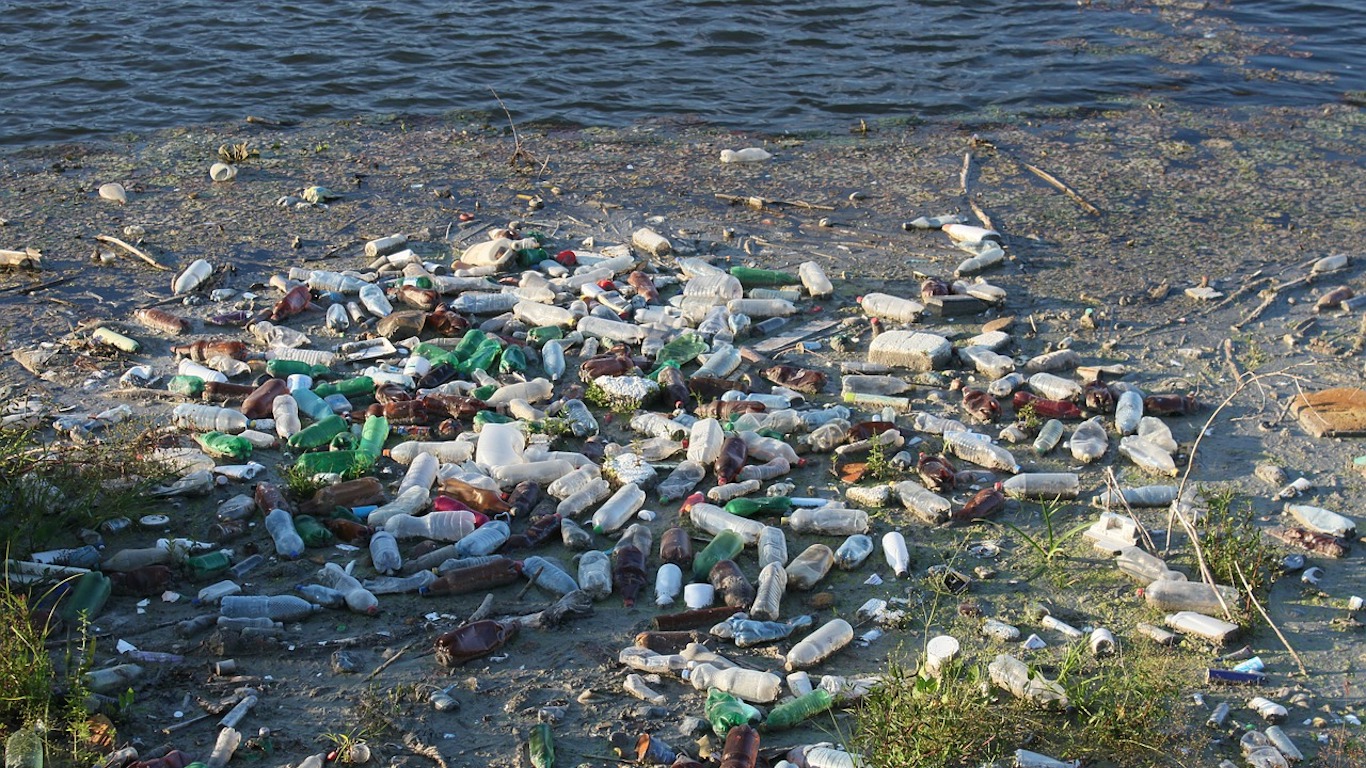
20. Cleaning efforts of the Great Pacific Garbage Patch
The world’s oceans currently have at least five massive garbage patches where trash is drawing into gigantic, slowly rotating gyres created by oceanic currents. The largest of them, roughly halfway between Hawaii and California, is a swirling patch of mostly plastic debris – fast food containers, plastic bottles, shopping bags, broken toys, fishing nets, you name it – twice the size of Texas.
In September, a 2,000-foot-long floating system was deployed to the Pacific garbage patch in an attempt to herd the garbage into a smaller area, allowing ships to easily collect the waste to bring it back to shore for better disposal. This giant floating sieve is the product of Boyan Slat, a Dutch activist who was inspired after seeing Greece’s pristine Mediterranean waters sullied by plastic garbage. Slat’s Ocean Cleanup Project has received funding from several benefactors, including Salesforce founder Marc Benioff.
The system, known as System 001, arrived at the garbage patch in October and has been “deployed into operational configuration,” according to Ocean Cleanup Project’s most recent update. Will the project work? Some say it is unlikely unless cleanup operations coincide with real efforts to curb the roughly 2 million tons of plastic debris that is dumped into the ocean every year. But advocates argue the project does not harm and is worth a try.

21. In The Netherlands, electric ships are hitting the water
We may be experiences an electric car renaissance, but if the world wants to get serious about combating greenhouse gas emissions, it needs to begin paying attention to the massive amounts of pollution emitted by the global cargo shipping fleet. These gigantic vessels are largely powered by diesel, but many are still the burning of bunker fuel, the sulfur-infused sediment of the oil refining process and one of the filthiest forms of fossil fuel.
According to the International Maritime Organization (IMO), cargo vessels make up as much as 3% of annual carbon emissions (a not-insignificant amount), and the European Parliament estimated in 2015 that this share could grow to 17% as other industries clean up their acts and global trade continues to grow. The industry is beginning to take notice. Earlier this year, The Netherlands deployed its second hybrid passenger ferry in Amsterdam, and a local manufacturer is currently building or deploying seven electric barges to replace diesel burning vessels in the country’s canal system.
Broadly speaking, manufacturers are under pressure by the IMO to phase out sulfur dioxide emissions. In April, the IMO, a United Nations agency, adopted a policy to cut emissions from vessels by 50% below 2008 levels by 2050.
[in-text-ad]

22. Researchers say the future of electric car batteries is in silicon
The development of better and more cost-effective, energy-dense, rechargeable batteries is the single most important factor in the development of electric vehicles and residential, commercial, and grid-level energy storage. Numerous companies are researching the use of silicon dioxide, the primary ingredient in sand and the second most abundant element on Earth after oxygen.
This month, Gene Berdichevsky, CEO of Sila Nanotechnologies, a California startup spun out of a laboratory at the Georgia Institute of Technology, announced the company has developed technology that can replace graphite with silicon while boosting range and energy capacity in next generation batteries.
Silicon is not only cheaper and far more abundant than graphite, but also it has a higher energy density and could replace graphite as part of battery anodes. Sila currently boasts BMW as a major customer and wants to have its technologies in over a million electric cars by 2025. Even if Sila does not succeed, many other engineers are working on using silicon as a cheaper, more efficient alternative to graphite.

23. NASA sends a probe to the sun
At 3:31 a.m. on the morning of Aug. 10, humankind took another giant leap when NASA launched the Parker Solar Probe, an ambitious attempt to send a human-made object to its closet rendezvous the sun. Our star is the source of all known life in the solar system.
But the sun perpetually threatens to rain energetic particles that could disrupt radio communications, GPS tracking, and fry electrical grids. Past coronal mass ejections went unnoticed because they only impact newer electronic technologies. The last major solar eruption, which took place in 1859, sent a surge of electricity through telegraph wires, shocking operators and lighting paper on fire. The auroras created by the surge were seen as far south as Cuba. If a similar eruption happened today, it could grind global commerce to a halt and inflict major damage to electrical grids.
The solar probe’s main mission is to collect data on solar activity that will help earthlings to forecast major space weather events. The probe will come within 4 million miles of the sun’s surface, encountering “heat and radiation like no spacecraft before it,” according to NASA. (By comparison, the Earth remains an average of 93 million miles away from the sun’s surface.) In early November, the probe was within 15 million miles of the sun’s surface during its first orbit. If all goes as planned, the probe will circle the sun 24 times through 2025, relaying data each time it passes within transmission reach of Earth.
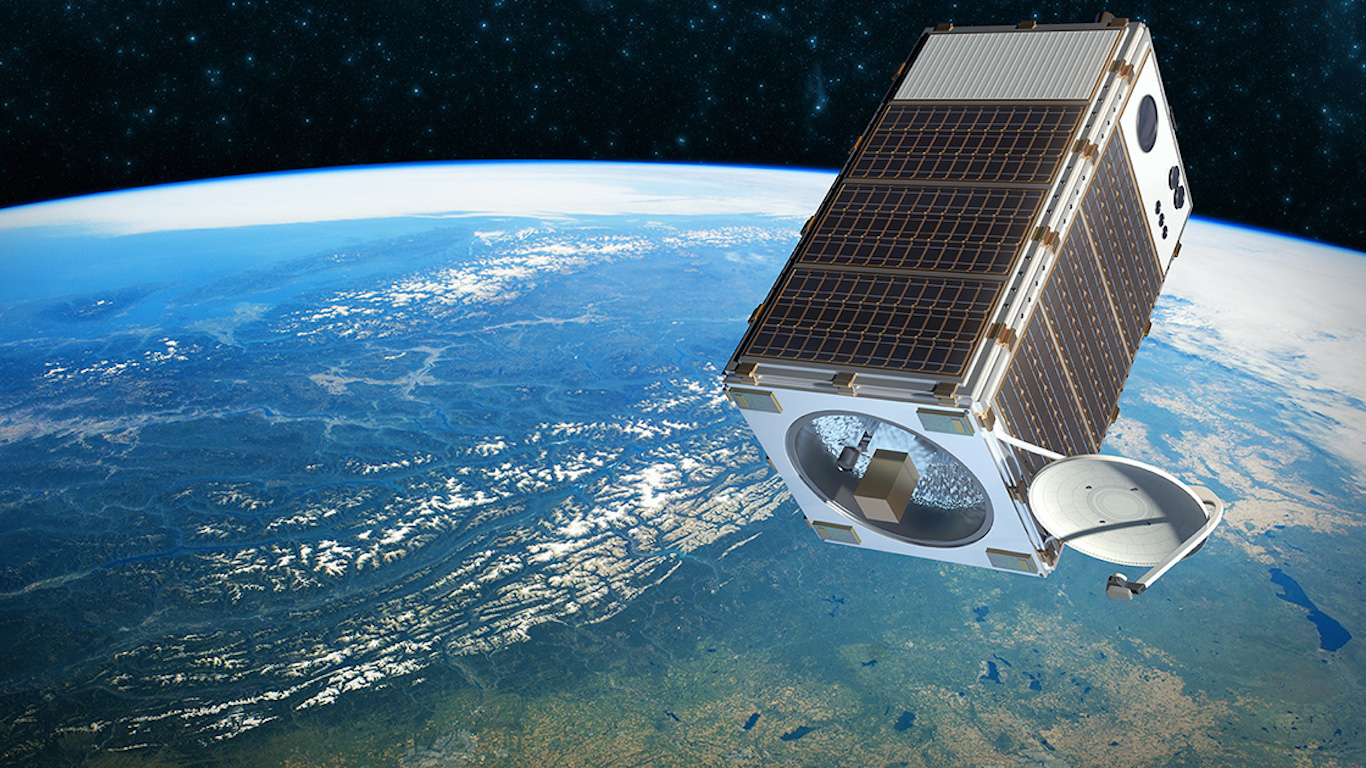
Methane, a colorless, odorless gas, spills out from natural gas drilling sites and from livestock flatulence and is responsible for about 10% of all U.S. greenhouse gas emissions. It is also notoriously difficult to identify.
In 2015, a natural gas and methane leak in California’s San Fernando Valley lasted for months even though local residents reported a rotten smell originating from the mercaptan gas additive to the methane. In less populated areas, methane gas leaks from wells can go on indefinitely.
In April, the Environmental Defense Fund announced plans to develop and build a satellite that will identify and measure methane emissions worldwide. Finding the leaks would be the first step to plugging them. The project known as MethaneSAT has already raised $400 million, and work is well underway with the help of Harvard University and the Smithsonian Astrophysical Observatory. The preliminary launch date for MethaneSAT is late 2020 or early 2021.
[in-text-ad-2]

25. Jellyfish-like robot can squeeze into tight underwater spaces
It is cute and it is squishy and scientists are hoping it will help track how coral reefs respond to warming waters as temperatures rise worldwide. The “robo-jellyfish” is a softball-sized robot that can squeeze its way into tight spaces in reefs to measure salinity, temperature, and other pertinent information with the help of eight small, battery powered siphons on each of its eight tentacles.
As its name implies, it looks and moves like a jellyfish, and it can reach spaces that larger underwater drones cannot reach. Currently, the tiny drones have to be recovered manually to download the data they collect, but future versions will be able to transmit data electronically. The drones are cheap to build too: the prototypes cost about $200, a relative bargain in the world of data-collecting, waterproof drones. Like other robots, these robo-jellyfish were inspired by animals found in nature, helping to show that biological evolution is one of the best engineers.
Start by taking a quick retirement quiz from SmartAsset that will match you with up to 3 financial advisors that serve your area and beyond in 5 minutes, or less.
Each advisor has been vetted by SmartAsset and is held to a fiduciary standard to act in your best interests.
Here’s how it works:
1. Answer SmartAsset advisor match quiz
2. Review your pre-screened matches at your leisure. Check out the advisors’ profiles.
3. Speak with advisors at no cost to you. Have an introductory call on the phone or introduction in person and choose whom to work with in the future
Thank you for reading! Have some feedback for us?
Contact the 24/7 Wall St. editorial team.